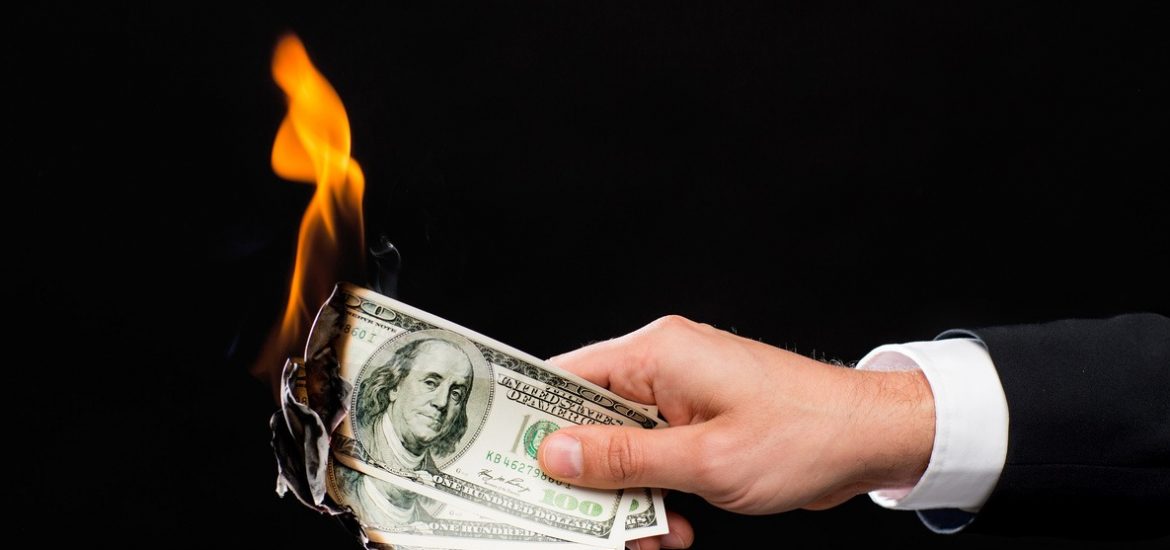
I have no doubts that we have all forked out some of our hard-earned Benjamins on something completely regrettable, as I certainly have. Over the years, I have made some questionable purchases, and here are the worst.
I want to begin this article by pointing out it is for entertainment purposes. That is, it’s tongue-in-cheek and I no longer feel aggrieved by these purchases, so you’re welcome to mock away with impunity. However, I would like you to leave some of your own worst purchases in the comments; we’ve all made mistakes, so now’s not the time to be shy.
A Star Filter
I could only have been about six months into the ownership of my first proper camera, and I was on something of a rampage with purchasing. I didn’t have a great deal of money at the time, so I couldn’t buy anything outlandish (which is probably for the best, actually), but I often bought smaller items.
A website in the U.K offered a number of own-brand filters that created different effects in-camera. I bought five or so, and only one of them was useful (circular polarizing filter, though I didn’t fully understand its purpose!) Two of the filters were particularly disappointing, even to my naive and hopeful eyes. The first was a soft-focus filter, but I was concerned when I bought it that it would make my images look like the 90s glamour portrait of my auntie that had been hanging on her wall for decades. It did.
However, the other major failure was the star filter. This thing was desperately cheap, and it showed. There are occasional uses for star filters, but not for this one, not ever. Star filters typically have a grid across them that catches the light and makes it flare dramatically into the points of a star. This one, however, had such a small and deep grid that every glimmer of light burst in all directions. An utterly ridiculous product. If I can find it in my giant box of photography stuff I seem to take with me every time I move, I will create some example images, but I suspect it was flung to its death at some point.
A 400mm Vintage Prime
This was another example of my gambling, and like when I actually gamble, I lost. I saw a vintage, long-reaching prime lens on eBay with not long left and zero bids. I decided to put in a low offer and I won it. I didn’t expect much, but it truly exceeded my expectations, but in the wrong way. After I managed to track down and purchase an adaptor to fit this lens to my Canon (because wasting money on the lens was not enough loss for my tastes), I mounted this howitzer on my body and strode out to the garden for test shots. With photographs, there are sharp images, passable images, soft images, out-of-focus images, and then what abomination this lens produced. It transcended ordinary parameters of in and out of focus because honestly, you couldn’t tell. Every shot looked as if it was the view of someone with severe cataracts looking through Vaseline.
Still, it wasn’t a complete loss; I used it to weigh down a backdrop once, and in a pinch, if I could lift it above my head, it could kill a burglar.
A Brandless Macro Ring Light
Any regular readers of mine — of which there are at least three — will know I have always had a penchant for macro photography. My first dedicated flashgun for it was a tricky venture. I wanted to buy a Marumi ring flash as I couldn’t afford Canon’s MT-26EX-RT Macro Twin Lite (it was likely a much earlier version of this model), but I was at university and rather poor, and I couldn’t really afford the Marumi at the time either. So, what was a young man keen on photographing insects to do? I found a knock-off, brandless one on eBay that came with a whole arsenal of plastic crap I’d never touch. Quick, where’s my wallet?
This thing was not only a disappointment to macro, it was a national insult to its country of origin. Its max sync speed was something like 1/60th, which meant I needed to tase insects to keep them still enough to capture. Its max brightness was so pitiful that you needed to be closer than 1:1 for it to really do much work, but if you got too close, it somehow didn’t hit the subject because of the lip of the black plastic holder. Fear not, however, it had three more perks. The first: it came with colored gels so strong that not only did they blanket the scene with a paint bucket hue, but they bordered on opaque, so the dazzling light output was even less pronounced. The second: it had a video mode where the light became continuous, but this was some way over a decade ago, so LEDs were akin to tiny screw-in bulbs. The third: after a few forced uses to justify my dreadful purchase, the battery compartment activated some sort of self-cleaning mode and caused all the batteries to hemorrhage acid. Perhaps it was ending itself out of shame, who knows?
A Beginner’s Workshop for Portraiture
I’m going to be exceptionally sparse on the specifics here as I wouldn’t want to hurt anyone’s business, though being able to find this workshop would be next to impossible as it wasn’t where I live. So, let me freely lament. After buying my first camera and falling face-first in love with the craft, I wanted to try portraiture. The problem was, I was knee-rattlingly nervous to do my first shoot and felt unworthy of anyone’s time, model or otherwise. So, I found a workshop for portraiture near somewhere I was going to be staying on a trip and I bought a voucher. It wasn’t expensive, but it wasn’t so cheap I expected nothing in return.
On the day, I arrived at a rundown studio and a waiting room of bored people of varying ages. After a brief wait, we were blessed with the longest presentation on the fundamentals of cameras I could have imagined was possible. It was largely a self-congratulatory slideshow of the photographer’s landscape images, upon which the photographer overlaid spurious composition claims. After a break and some free water with the vague memory of coffee, the model (read: a human roped, seemingly begrudgingly, into standing in front of us) was brought in. We were then given information on how to use our cameras in a way that would yield a picture of a person. That’s as clear as I can be because that’s as clear as it was.
Much of the rest of this day was spent watching the photographer try to figure out the students’ various cameras of brands different to their own and then rotating one by one to snap the disenchanted face of the bored subject. In around the third hour, I decided there was no value in throwing good time after bad, made my excuses, and left, with hours to go. I learned valuable lessons that day, arguably worth the money I paid, but none were on photography.
What Is the Worst Thing You Have Bought as a Photographer?
It’s over to you now. I’ll just state I would like the items at least tenuously linked to the photography industry. And keep it light — this isn’t your chance to exact vengeance on a brand you perceive to have wronged you.
